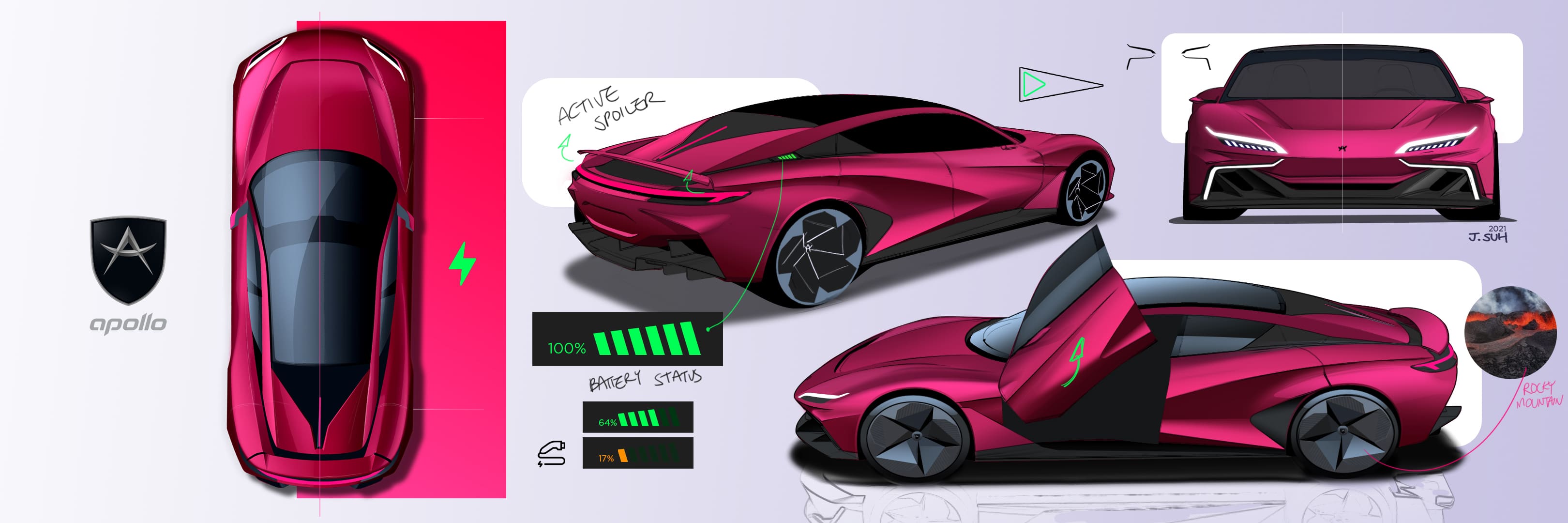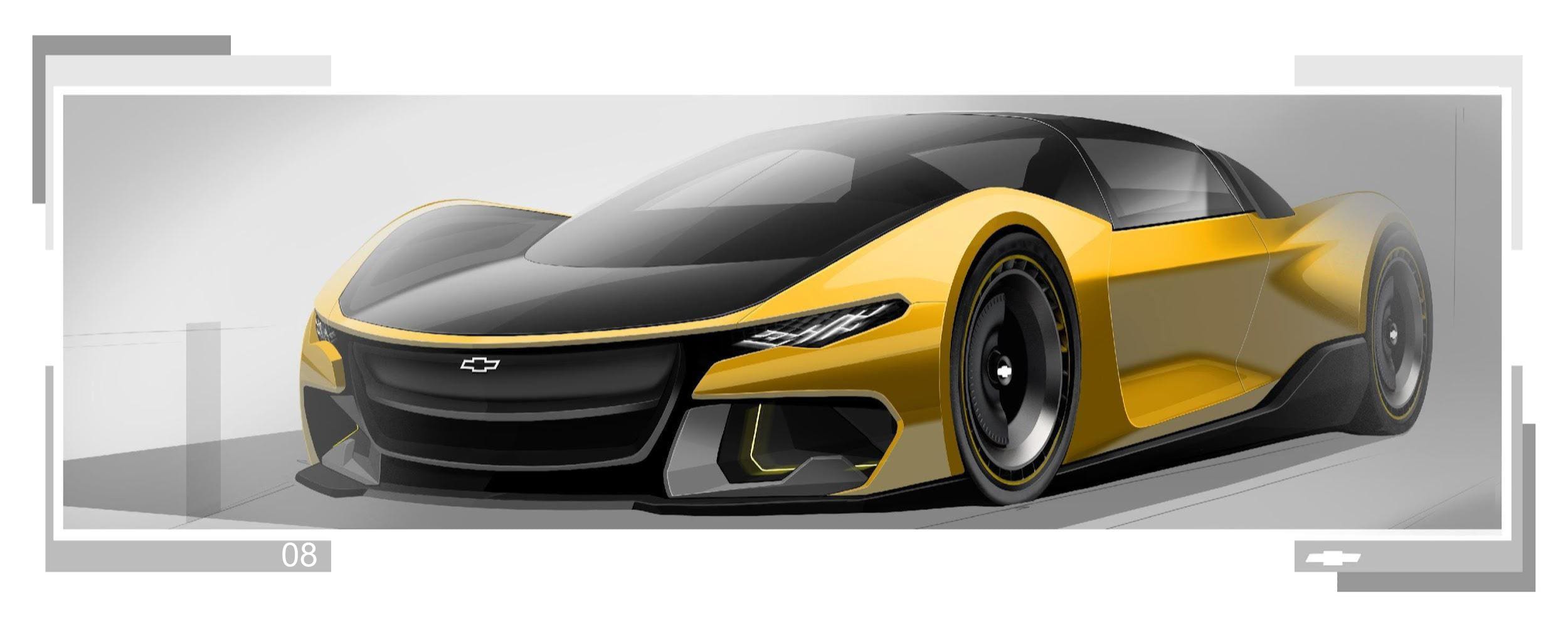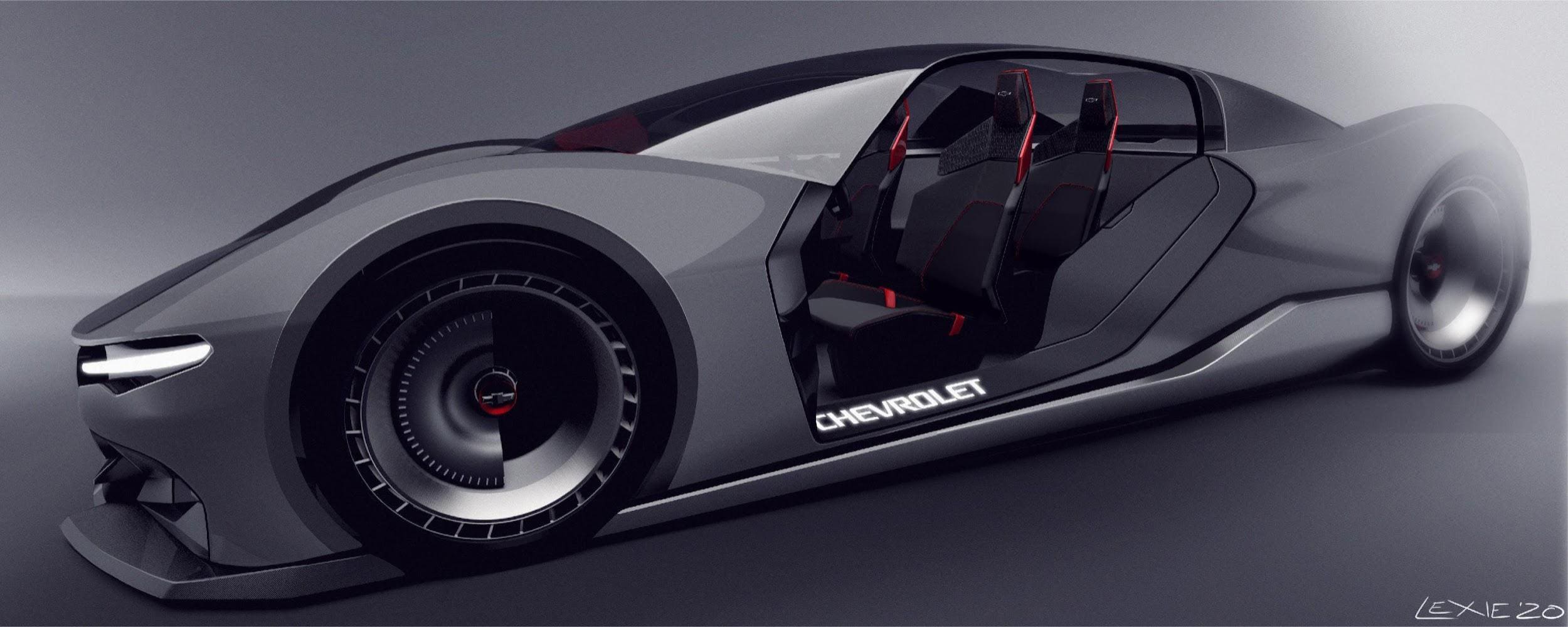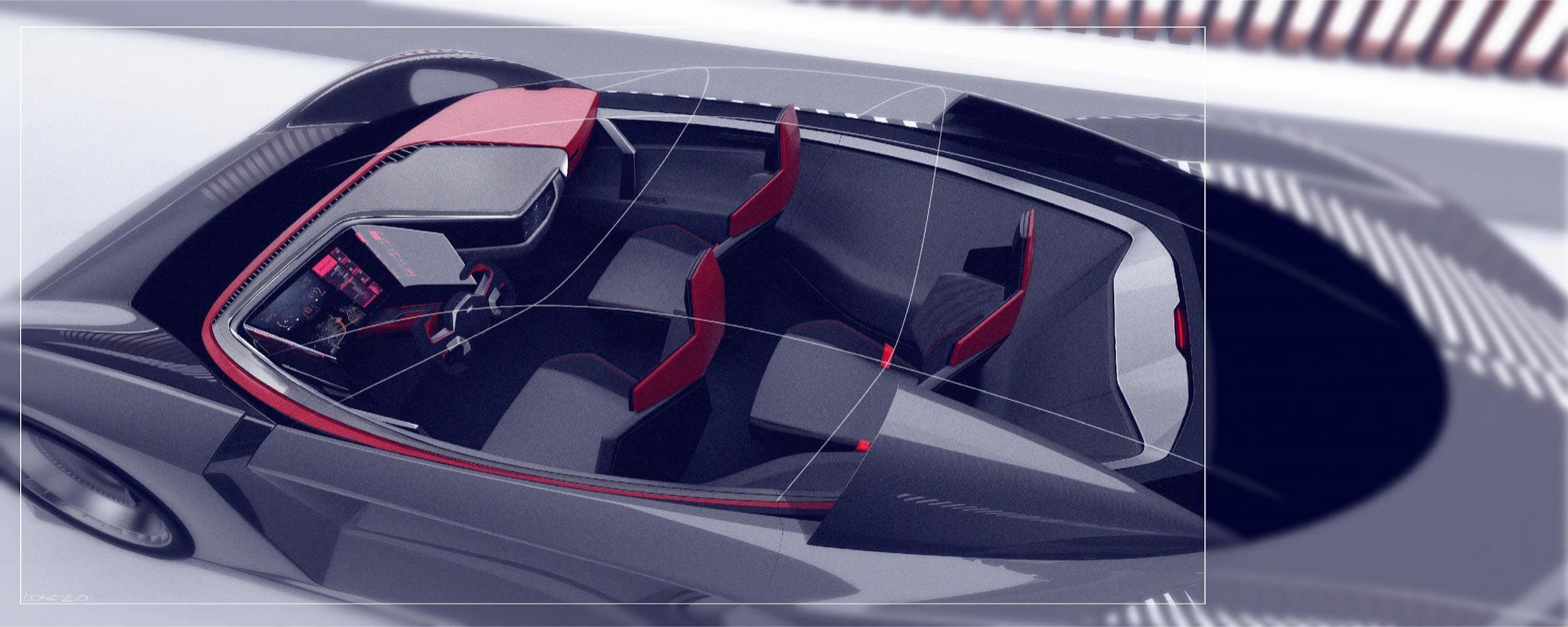Shifting Gears: How Women are Driving the Future of Movement
March 22, 2022
Changing the way we move, specifically in the automotive industry, is imperative to help reduce our carbon footprint and lessen the lasting effects of climate change. We need to rethink the way we use natural resources and the women coming out of CCS’ Transportation Design program are leading that change.
In the past, mobility was seen as taking a person from point A to B, and the future needs to hold a shifted focus of sustainability, connectivity and a personalized transportation experience, according to automotive Designer Hyeyoung “Jessica” Suh (’18, Transportation Design). Suh works for IDEENION Design AG, a design and development company that explores solutions for the future of mobility, located in Gaimersheim, Germany.
Suh designed the exterior of the Apollo EVision S and presented the design concepts in November 2021. She says that the EVision S takes the first step for Apollo vehicles towards an electrified future. Suh also had her hand in the development of Universal Mobility Electrified (UME). UME’s goal is to create sustainable solutions for a range of vehicles, like urban delivery vehicles (UDV), mobility scooters, and drones through modular design.
The UDV was aimed at reducing carbon emissions with quick-battery-change, and parts of the truck being shipped in knock-down kits that can be assembled in local micro-factories. The mobility scooter was designed to assist aging populations in remaining active and independent as they age.
From her internships with Tesla and Uber ATG, to her current position as strategic interior designer at Ford, Eva Ross (’18 Transportation Design and Product Design) has aimed to lower the barrier for sustainable mobility through the vehicles that she works on. The vehicles range from the use of autonomous technology, vehicles for rideshare to shared ownership, and low-cost electric vehicles.
Before making it to the market, the manufacturing, logistics, delivery, materials and other factors have to be considered as it pertains to the effects on the environment.
“We have to look at not only how it actively affects the environment, but also how it is produced, and how industries related to the product affect the environment, such as mining for cobalt, installing new infrastructure for charging stations, the disposal and reuse of components and products, and the expected longevity and lifespan of the product,” says Lexie Nowicki (‘20, Transportation Design), creative designer at General Motors. “Our job focuses on so many more things than just styling the car.”
Although Nowicki is a few years out from reveals and releases of what she has been working on, she can say that she’s apart of two advanced teams exploring ways to make proposals more sustainable through powertrain, efficiency, size, aerodynamics and consumer/industry demands.
Women in the industry aren’t only working towards solutions for the future of the environment, but are also navigating a field dominated by men. According to Zippia, men represent about 70% of designers in the industry, while women represent 25%.
Nowicki recalls being one of the only women in class on her first day at CCS but found comfort and community in the female faculty and mentors. She even joined the Automotive Women’s Alliance, a nonprofit set on empowering women in the automotive industry.
“My goal in my position, as well as future positions, is to keep progressing and inspiring brands and vehicles to explore new areas of mobility with an emphasis on efficiency and sustainability,” Nowicki said. “I also look to inspire others, especially women, to get involved in the industry. I want other women to see me and know my story and goals to hopefully inspire them.”
Still, in the early stages of their professional careers, they’ve learned a lot in the past few years:
“Throughout my professional career, I’ve learned that design is not just about what it looks and feels like,” Suh said. “Design is about how it works and involves the user’s desirability and technology possibilities.”
“Being on these teams, I have worked not only as a designer sketching on multiple programs,” Nowicki said. “But also strategizing for brand identity, brand progression, sustainability, customer and marketing progression, and so many other subjects outside of just sketching.”
“Transportation design has so many facets. It is an extremely complex industry, and that is one reason it is so exciting to be a part of it,” Ross said.




